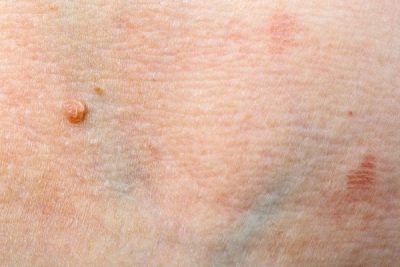
HPV is considered to be the most common sexually transmitted infection (STI). In many cases, HPV can lead to the development of warts or other physical symptoms, and may cause itching or burning of the skin.
HPV is the leading cause of genital warts. These warts are usually flat, cluster-like growths, that form around the genital areas, anus or even mouth. Individuals want the cauliflower-looking infections removed for many reasons, such as irritation of the skin or simply not liking the look of the warts.
The virus is transmitted through sexual intercourse, but condoms can help to decrease the transmission from person to person. Although the warts are usually painless, there are possible symptoms such as itching, burning and tenderness. Genital warts are common among younger individuals, between the ages of 15 and 29. However, the people who are most at risk are those who have frequent sexual activity with multiple partners.
Before any treatment options are offered, our dermatologists will thoroughly examine the warts to see the severity of the infection. Once the problem is diagnosed, they will provide a specific plan on how to best remove genital warts.
The Dermatology Specialists offers a variety of options that can help reduce the appearance of warts, however, the virus will always be in the immune system.
Cryosurgery
During Cryosurgery, liquid nitrogen is applied directly to the wart, which freezes and aids in eliminating the warts.
Candida Antigen
Candida is the yeast that causes vaginal infections in women. When Candida is injected into the skin at the site of the wart, the immune system begins to defend the body from the yeast infection. As the body is fighting off the yeast, it then kills the genital warts in the process.
Bleomycin
Bleomycin is injected at the base of the wart. When the diluted substance is put into the roots of the wart, the infected tissue gradually dies off.
Trichloraceitic Acid
Through an injection of this acid, the proteins from the cells of the wart are killed. This treatment option stays local upon injection, limiting the area affected. However, the initial procedure may cause mild discomfort.
Pulse Dye Laser
This option should not be used for the initial treatment. It consists of placing a small laser against the surface of the infected area and allowing it to pulse. This takes care of any pesky warts that will not leave after the first treatment.
CO2 Laser
Before the laser is put on the skin, local anesthesia is administered to ensure that there is no pain. The laser cuts around the wart and burns the roots of the warts by using high amounts of carbon dioxide.
Blade Removal Preventative
The genital warts are surgically removed, which limits the warts ability to spread.
Imiquimod Therapy
Imiquimod is a form of immunotherapy. It triggers your immune system to fight off the virus that is causing the warts. This helps shrink the warts over time. This is only recommended for warts that are constantly recurring.
Genital warts can be difficult to remove in one treatment, due to spreading so easily. Depending on the severity of genital warts, many patients require more than one treatment for removal. It is important to schedule follow-up appointment, where warts can be evaluated to prevent the physical warts from reoccurrences.